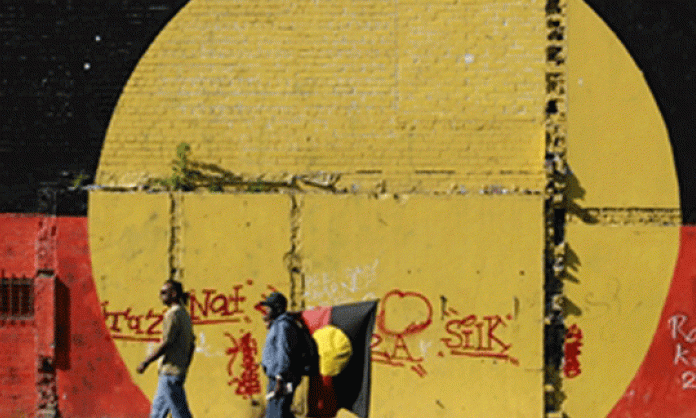No one was fooled by Tony Abbott’s claims to be a “prime minister for Aboriginal Affairs”, but the shameless contempt for Indigenous people on display in the budget is still a slap in the face: more than $500 million cut from Indigenous affairs and the merger of 150 programs into five.
But the statistic that really summed it up relates to the lifting of the pension age to 70: the average life expectancy of an Indigenous male is 69.
The government’s message is clear: “You’re going to die before you see a cent.”
Most services to Indigenous people are not delivered through Indigenous-specific programs. But the general cuts will have a disproportionate impact, particularly in health and employment.
The Liberals want to charge a $7 fee for GP visits from July next year. But when you have a chronic disease, it’s not just about the fee to see your doctor. If you need a blood test, you’ll be slugged with another co-payment for pathology; if you need an X-ray, that’ll cost you as well. It all adds up.
“The co-payments, as proposed, will hit those most disadvantaged, particularly Aboriginal people and Torres Strait Islanders, who have the least capacity to pay, have high rates of ill health and injury, and who experience significant difficulties already in getting access to appropriate health care”, said the Australian Medical Association vice president, Professor Geoffrey Dobb.
The AMA reports that 37.5 percent of Aboriginal and Torres Strait Islander people living in non-remote locations already struggle to access health services because of the cost. They are also missing out on their share of health resources because their use of the Medicare Benefits Scheme and Pharmaceutical Benefits Scheme is much lower than that of the rest of the population.
When Joe Hockey was questioned by members of the audience on the ABC’s Q&A program in May, he claimed that people with a chronic illness would not have to pay the GP co-payment because they would be on a care plan with their doctor and would therefore be exempt. The AMA disputes this, saying that only a very small number of consultations for chronic illness will be exempt.
The draconian conditions that the budget will impose on young people on Newstart benefits will also disproportionately impact Indigenous people because the Indigenous population is on average younger than the rest of the population.
The government’s own COAG Council of Reform Report on Indigenous Reform 2012-13, released in May, showed that the Indigenous unemployment rate is 21.6 percent – almost four times the rate for non-Indigenous people. And the gap is widening. From 2008 to 2013 it increased by 6.6 percent.
In a budget of cuts, it’s telling where the government is actually spending money – $72 million over four years has been allocated for school truancy officers and extra police and police stations in seven remote communities.








